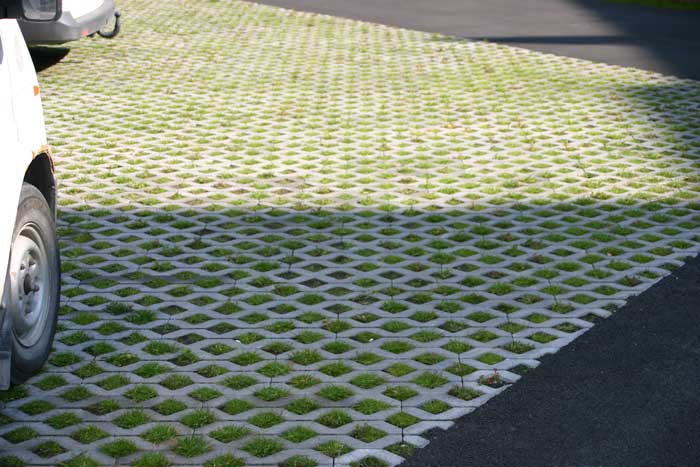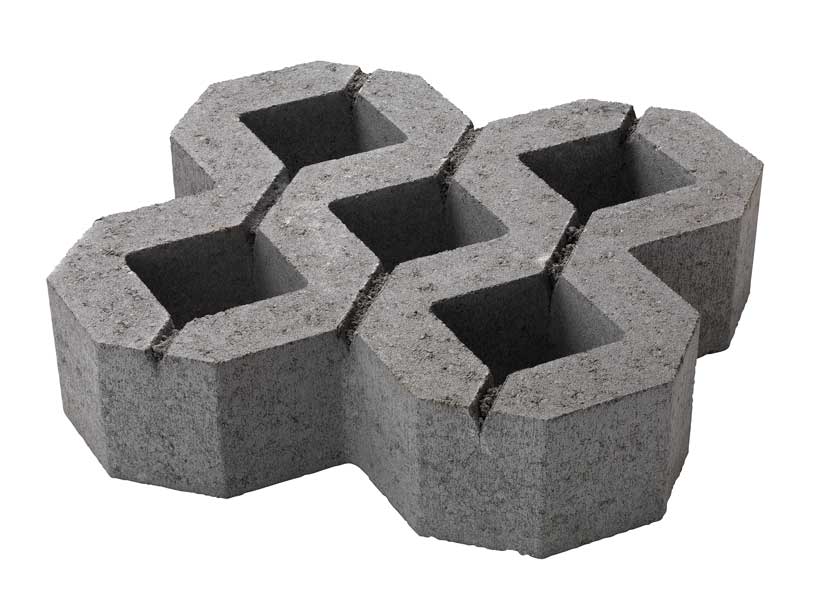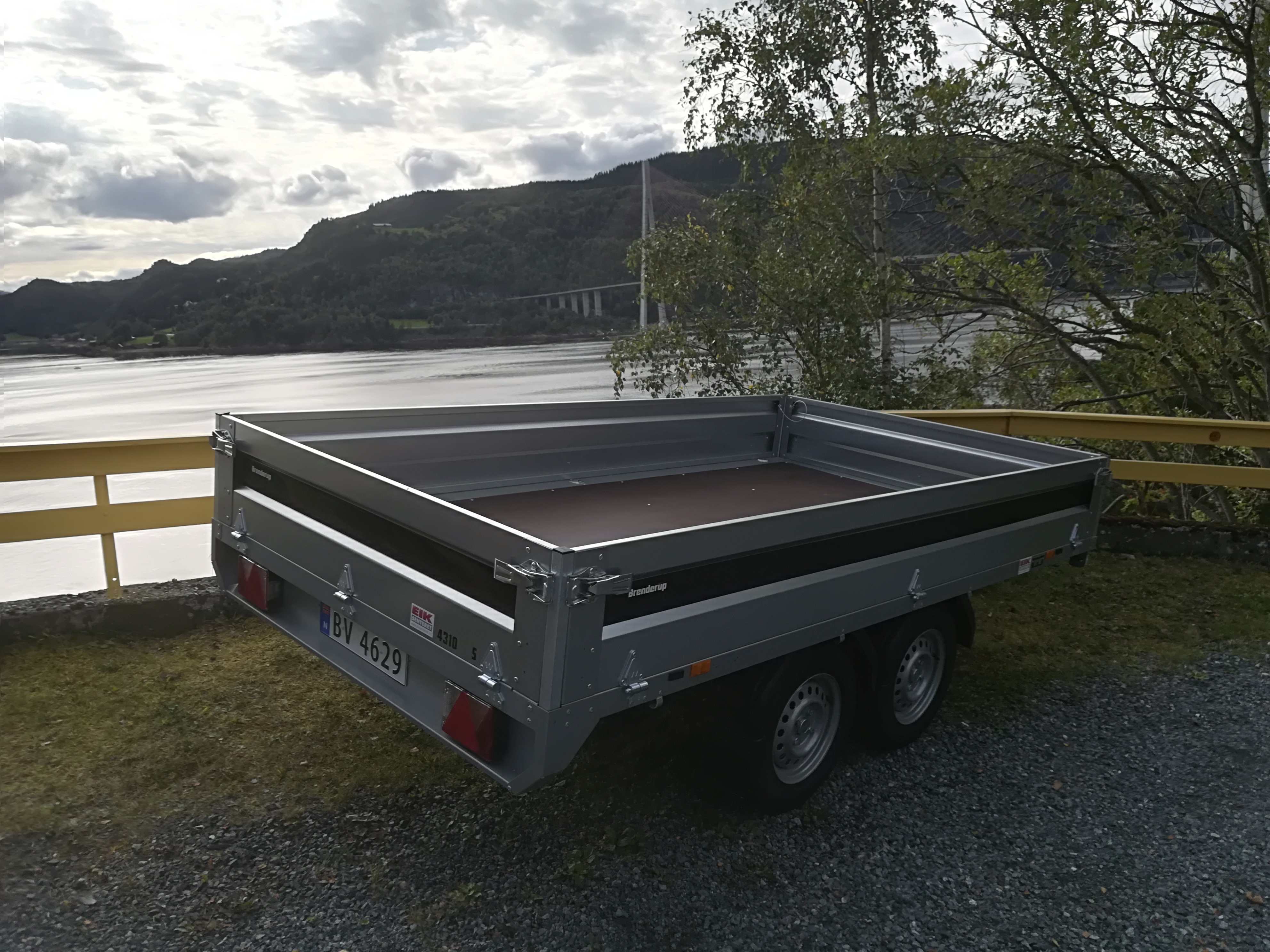This spring we added more gravel to improve the driveway. It cost about NOK 4000. As expected, it required a lot of work to move (position, is the polite technical term), Yet, it effortlessly produces potholes, and in general doesn’t work perfectly.
What is needed is a driveway surface that would still allow grass to grow, and cars to drive.


This is “Gressarmering” from Asak Miljøstein. It is 400 x 400 x 100 mm and weights 22 kg. There are 6.25 stones per square meter. I’m not sure that one needs this quality of product for a driveway, and I would consider using stones with only half the height. Many other paving stones only have a height of 40 mm. Regardless of the size, paving stones need rebar. One approach is to make smaller and lighter stones, for example a 3 x 3 arrangement of exactly 9 stones per m2, with an aim of reducing each stone’s weight to about 7 kg, and the square meter weight to 60 – 65 kg. for a total weight of 12 – 13 000 kg, for an estimated 200 m2 (or 1800) paving stones on the driveway.
The retail price of Gressarmering stones is NOK 60 each, or NOK 375 per square meter, or NOK 75 000 for the driveway, labour excluded. Cement can be purchased for about NOK 1 a kilo, and sand for even less. Thus, the raw material costs should be considerably under NOK 60 per square meter, or about NOK 12 000 for the driveway, for an alternative product. This is consistent with other information presented in some Youtube videos, that state that the material costs of building one’s own paving stones are about 20% of buying them.
Youtube videos
The first step for many DIYers is the inspiration phase, known more correctly by spouses as the procrastination phase. This is where countless Youtube videos are consumed. To begin with all of the ones I found about making concrete paving stones used rubber molds.
https://www.youtube.com/watch?v=2ctNaoUrfYM
The process of making a rubber mold from an existing concrete paving stone is described. It was interesting, but I decided that it was not my job to keep the plastic industry profitable. The one part of the video that was important was the use of a vibrating table to ensure that the concrete occupied all of the mold, and didn’t leave air gaps.
https://www.youtube.com/watch?v=DTGLuBzADuo
Professional Communications – Week 7 Presentation, is an unusual title for a DIY video. It was also labled, Making your own concrete pavers. This is obviously some sort of student video. Technically, it has a lot of issues, including low quality sound and not much better video. Yet, it is the most important video that I watched today.
The mold used was made out of scrap lumber and plywood. Pam, the non-stick spray found in every American food store, was used as a release agent. They provided information on mixing concrete, putting it into the mold and adding rebar. One waits 30 minutes, then gently uses a brush to give texture to the surface. One waits yet another 30 minutes, and the stone can be removed from the mold.
https://www.youtube.com/watch?v=GWImU7CCU8g
This video shows a simple vibrating table made out of a sheet of plywood. The plywood is attached to an old car tire, as well as an electric motor with an eccentric shaft. This system creates a lot of vibration, however improvements could be made so that paving stones in their molds don’t simply vibrate off the table.
https://www.youtube.com/watch?v=Vh3m_SKtJrc
This vibrating table is interesting, but the mechanics of it are too complex. The table top does do a great job of keeping the paving stone forms in place.
Workflow
One of the challenges is that neither a single paving brick nor a square meter of them, may be the ideal manufacturing unit. Sheet material is most often 1200 x 2400 mm. This makes 600 x 600 a useful size that could allow 2 x 2 = 4 paving stones to be manufactured simultaneously, with a material handling weight of somewhere around 30 kg. One sheet of MDF or plywood would make 8 separate units (for 32 paving stones).
| Station | Start | Stop | Activity | Tools and materials; comments |
| 1 | 0 | 10 | Prepare forms | Release agent |
| 2 | 10 | 20 | Pour concrete | Vibrator, concrete mixer; cement, sand, water, rebar |
| 3 | 20 | 30 | Wait | No work needed in this position. |
| 4 | 30 | 40 | Wait | No work needed in this position. |
| 5 | 40 | 50 | Roughen surface | Brush; Brush surface to create rough texture. |
| 6 | 50 | 60 | Wait | No work needed in this position. |
| 7 | 60 | 70 | Wait | No work needed in this position. |
| 8 | 70 | 80 | Remove | Trolly; Remove, move and store paving stones. |
This looks like too much work for one person, about right for two, ideal with three (probably with the third person only working at intervals) if breaks can be staggered. This allows the production of 24 paving stones an hour. Given a 7.5 hour working day, only the first six hours can be used to initiate stone production. The last 1.5 hours goes to clean up, and waiting for the last stones to cure sufficiently to be removed from their molds. That results in 144 paving stones a day. The total production of 1800 paving stones would require 12.5 working days.
Another approach is to binge produce with shifts of workers. The production of 1800 paving stones would require 76.5 hours of continuous activity, 3 days 4.5 hours.

One of the fun things about DIY is finding cost effective solutions. Anyone can buy an expensive release agent. When Billi Sodd repeated the suggestion of using Pam, this crossed some inbuilt environmentalist barrier in Precious Dollar, who was then challenged to find other solutions that don’t involve sprays. Moral: Make offensive comments, and someone will be motivated to find a better solution!

